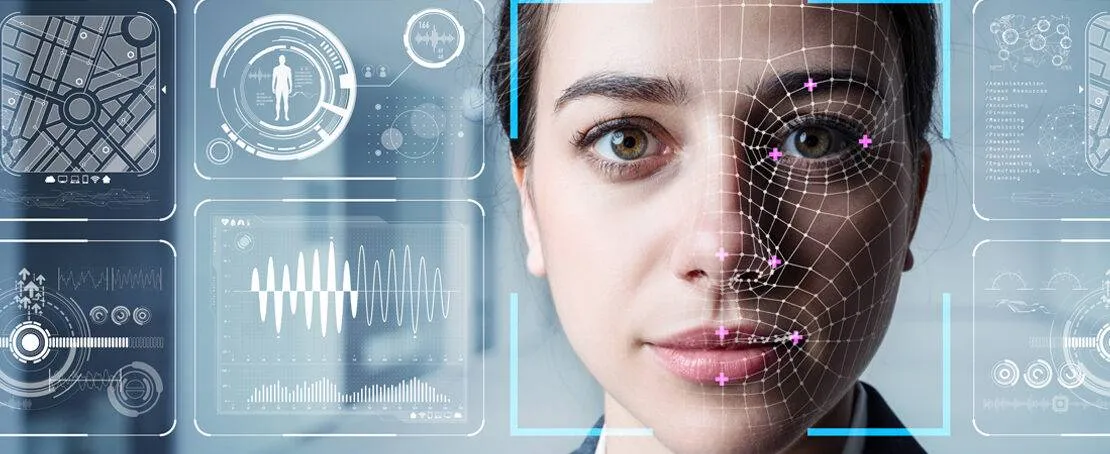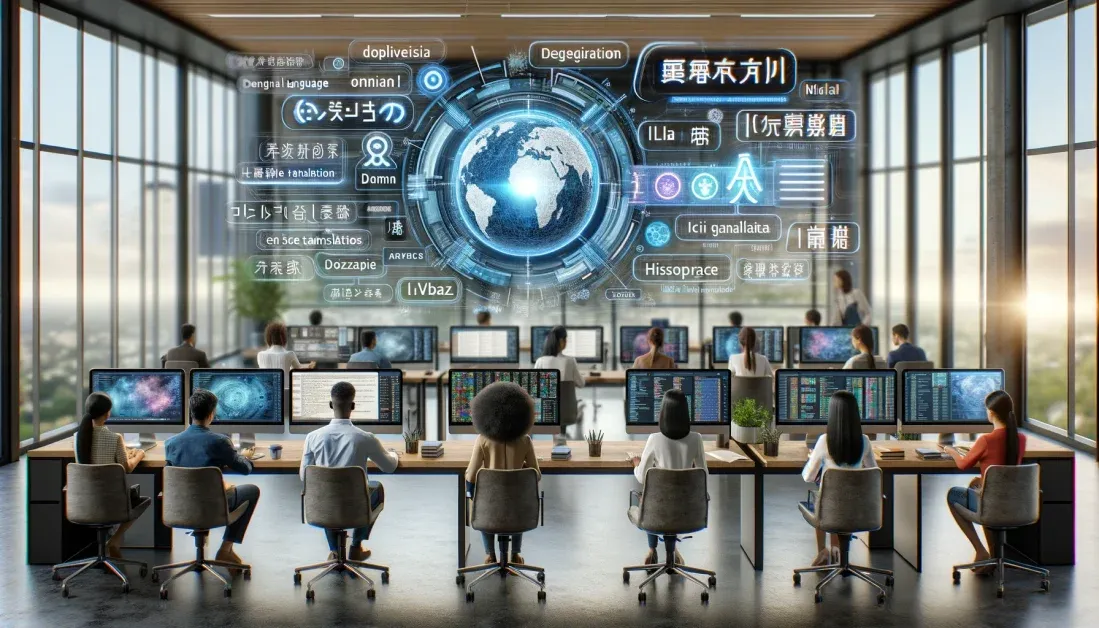The Role of AI in Enhancing Video Conferencing Solutions

In the past few years, video conferencing has grown from a selective business application to an essential communication method for business people, teachers, students, and users across the globe. Primarily, as the application of remote work and virtual communication is increasingly expanding, AI, a dominant tool, has proven helpful in improving video conferencing. It is also a common understanding that AI enhances video quality and provides additions such as simultaneous translation, meeting settings, etc. In the article, the authors describe how AI contributes to developing video conferencing technologies and how those innovations affect user interactions in different industries.
Improved Audio and Video Quality
"Improving audio and video quality is one of the most significant changes incorporated with the help of AI in video conferencing. Compared to this type of communication, old-fashioned video calling provides low-quality images without distorting the picture by changing the internet speed. AI solves these problems by regulating the density and choosing the preferable quality of the stream depending on the band connection available." shared Michael Jensen, CMO of Forsikringssiden. For instance, AI can make video streams clear and sharp even when the internet speed is low in the target market. From an audio point of view, AI-powered noise cancellation is revolutionizing everything. AI also regulates distractions, including typing, dogs barking, or any other sound that may make it difficult for participants to hear. AI also improves speech quality, eliminating background noise or squealing, which is often an issue in a group setting. Such changes make video conferences more professional and enjoyable for all speakers and listeners.
Real-Time Transcription and Subtitles
"The advances in AI technology for transcription have made video conferences possible, especially for multinational and diverse organizations. Speech-to-text writing instantly recreates oral words to written form, thus enabling the speaker and listeners to follow along fully. This is especially useful for those who do not comprehend ideas spoken in a language of their second language but can comprehend written language." commented Ivy Berezo, Marketing Manager at LUCAS PRODUCTS & SERVICES. Furthermore, live translation interventions with subtitles based on artificial neural machine translations for participants are possible. These features improve the convenience of holding meetings for persons with hearing impairments and those in noisy areas. In addition, chatty transcription allows users to avoid missing any of the meeting’s content since they can always review the meeting’s notes. For businesses, it also enhances the total management of records that capture meaningful discussions and decisions made during meetings.
Virtual Meeting Assistants

"Using video conferencing technologies, intelligent virtual assistants revolutionized communication during the COVID-19 pandemic. These virtual assistants are in a position to perform tasks like setting meetings, appointment reminders, and informing or reminding concerned participants about meeting subjects or objectives. Completing all these time-consuming chores, AI ensures users are less preoccupied with procedural issues and can concentrate on the content of the meeting. AI can also help facilitate meetings by adding options such as writing notes or creating a task list. Still, some AI assistants can schedule follow-up emails or remind participants of the meeting." says Sam Hodgson, Head of Editorial at ISA.co.uk. With these features, AI will keep meetings more structured, saving time and reducing members' effort during meetings.
Automatic Meeting Summaries
"AI can also provide summaries of the meeting after the conference. With NLP, AI can determine what has been discussed, the decisions made, and the next steps needed. It can also capture all of the information in a meeting summary that can be prepared instantly. This replaces recording notes, allowing the participants to quickly refresh themselves on issues discussed without having to watch the meeting record. That’s why the automatic summaries are handy for the teams who could have missed the meeting or need to remember the details discussed. The application of AI, in this case, ensures that all aspects of a meeting are covered and that all the people in the meeting have a common understanding of the intention and goals of the meeting." commented Leonidas Sfyris, CTO of Need a Fixer. AI can also recommend appropriate further actions based on the discussions, helping teams stay ahead and track what they are doing.
Enhanced Collaboration Features
AI, especially AI-powered self-developing tools, has made it easy to deal with collaboration challenges during video conferences. These tools include real-time document editing, office whiteboards, and even assisted AI brainstorming meetings. According to the conversation's flow, AI systems can suggest related documents or files to read. For example, if a meeting participant mentions a project, the AI system can suggest project files, presentations, or previous reports. Also, collaboration is likely to be improved through AI tools as they assist with organizing the time for the meeting. AI can monitor the discussions and be programmed to alert them when to go to the next point or item on the schedule. Such features ensure that participants are on the same focus and that productivity can be achieved during collaboration and virtual meetings.
Facial Recognition for Participant Identification

AI enhances facial recognition and reduces security threats, making video conferences easy to use. Gerrid Smith, Founder & CEO of Fortress Growth, explained, "AI detects the participants when they join the meeting and ensures that only approved persons can participate. This is especially beneficial to companies that handle extensive collections of data as AI assists in minimizing cases of data leakage." In addition, facial recognition is used to determine engagement levels during the meeting for implementation by AI implementation. AI can give feedback about how engaged or interested the participant was during the call by using information about expressions on the face and posture. For instance, if an AI sees that a particular participant is losing interest, it may recommend reactivating such a participant through questions or a call to order. Having an additional level of communication contributes to keeping the meeting engaged and effective.
AI-Powered Translation Services

Nick Oberheiden, Founder of Oberheiden P.C., shared, "AI improves facial recognition features, lessens security concerns, and makes video conferences easy to use. AI automatically acknowledges that the participant has joined the meeting and ensures that only authorized persons are allowed. This is especially good for firms that deal with big data, as AI helps reduce data loss cases. Moreover, facial recognition is used to identify attention levels during the meeting for AI applications. With the help of the information on the expressions on the facial region and position of the participants, AI can show how keen the participant was during the call." For example, if an AI detects that a specific participant appears disinterested in the conversation, it may suggest reintroducing such a participant through questions or a call to order. Having one more level of communication helps maintain interest in the meeting and makes it productive.
Smart Scheduling and Meeting Optimization
AI is also making arrangements and scheduling and optimizing video meetings more efficient and effective. Adam Martin, Managing Director at Nova Acoustics, reported, "Automated meeting scheduling is one area in which AI is more valuable, as it can scan through participants’ calendars and pick the most suitable time in terms of time zone, availability, and other complicating factors. This avoids time wastage on the continued from here or scheduling another time usually spent when arranging a meeting. Besides intelligent arranging, AI can enhance the content and time needed for the meeting." Based on experience and participant reports, AI can identify the most effective meeting time and lay out the optimal one. This helps ensure that meetings are well-timed and focus on the right areas at the proper intensity.
Conclusion
Enhancements brought by AI in video conferencing solutions can make video conferencing more straightforward, better, and more efficient than physical meetings. Discussion transcription in real-time, automated summary reports of the meeting, innovative collaboration tools, and even scheduling are improving the working virtual communication experience. In the future, advanced AI in VC tools will play an even more significant role, mainly due to the growing cases of remote and worldwide collaborations. By incorporating AI features, they can improve video conferencing solutions wherever they opt for them so that organizations and individuals can succeed tremendously with increased connections worldwide.